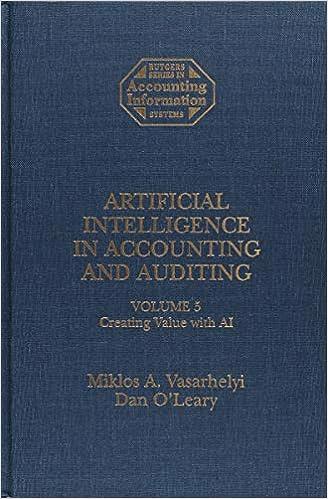Question
1. Calculate Return on Investment (ROI) for each of the hotels based on operating income and using total assets as the measure of investment. The

1. Calculate Return on Investment (ROI) for each of the hotels based on operating income and using total assets as the measure of investment. The manager of St. Francisco Hotel is considering adding new saunas from Finland that will cost $200,000. The saunas are expected to bring in operating income of $25,000 per year. What effect would this project have on the ROI and Residual Income (RI) of the St. Francisco Hotel? Would the St. Francisco Hotel manager accept or reject this project if Hospitality Inns uses ROI for performance evaluation? Why?
2. Why might Hospitality Inns want to use EVA instead of RI for evaluating the performance of the three hotels?
Problem 2) Investment Center Performance Evaluation Hospitality Inns owns and operates three hotels in three cities, San Francisco, Chicago, and New Orleans. The San Francisco Hotel was opened in 1988, Chicago Hotel was opened in 2001, and the New Orleans Hotel was opened in 2010. Hospitality has previously evaluated divisions based on Residual Income (RI), but the company is now considering changing to an EVA approach. All spas are assumed to face similar risks. The data for 2014 are as follow: St. Francisco Chicago New Orleans Total Revenue Variable Costs Fixed Costs Operating Income Interest on long-term debt (8%) Income before tax Net Income after tax (35%) $ 4,100,000$ 4,380,000 3,230,000$ 11,710,000 4,185,000 3,820,000 3,705,000 1,224,000 2,481,000 $ 553,800$ 503,100$ 555,750$ 1,612,650 1,600,000 1,280,000 1,220,000 368,000 852,000 1,630,000 1,560,000 1,190,000 16,000 774,000 955,000 980,000 1,295,000 440,000 855,000 $ 1,280,000$ 850,000 5,462,000 600,000$ 2,730,000 17,172,000 Current assets Long-term assets (Net of 4,875,000 6,835,000 depreciation Total Assets $ 6,155,000$ 6,312,000$ 7,435,000 $ 19,902,000 Note: Accumulated depreciation 2,200,0001,510,000 $ 220,000 Current liabilities Long-term debt Stockholders' equity 330,000 $ 265,000$84,000 $679,000 15,300,000 3,923,000 $ 6,155,000$ 6,312,000$ 7,435,000 $ 19,902,000 4,600,000 1,225,000 5,200,000 847,000 5,500,000 1,851,000 Total liability and stockholders equity $ 4,600,000$ 5,200,000$ 5,500,000 $ 15,300,000 $ 2,400,000$ 2,660,000$ 2,590,000 $ 7,650,000 Market value of debt Market value of equity Cost of equity capital Required rate of return 14% 11%Step by Step Solution
There are 3 Steps involved in it
Step: 1

Get Instant Access to Expert-Tailored Solutions
See step-by-step solutions with expert insights and AI powered tools for academic success
Step: 2

Step: 3

Ace Your Homework with AI
Get the answers you need in no time with our AI-driven, step-by-step assistance
Get Started


